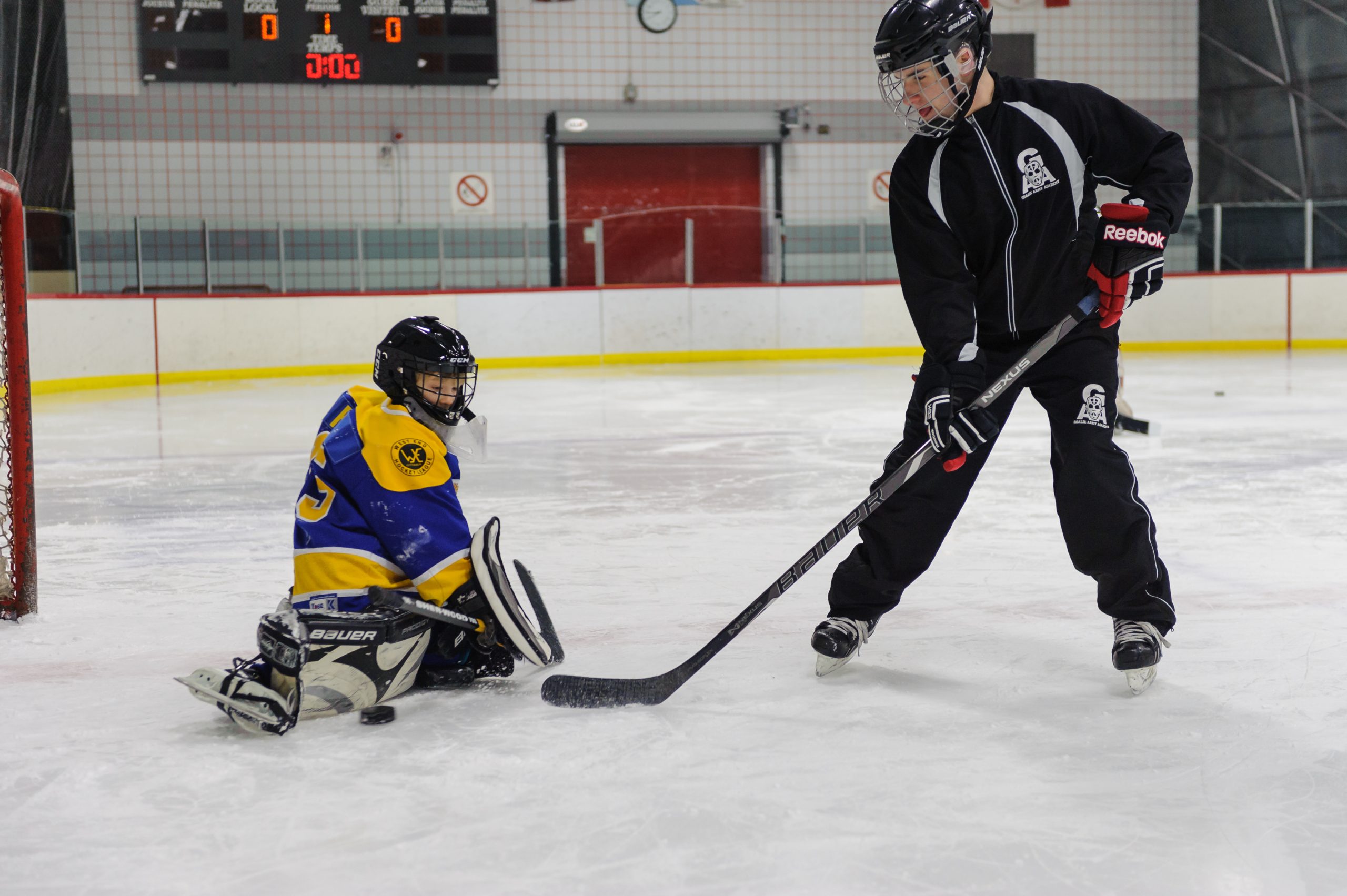
Goalie Training: Timing Is Everything
Movements from T-Pushes used to follow passes, to sliding back to the post to stop a breakaway, timing is one of the most important parts of a goaltender’s game. Although Goalie Army Academy provides students with goalie training on every aspect of the game, we also place additional emphasis on the ability to skate well via direct movements which are essential to goalies playing at any level. This ensures that our students are able to keep up with the speed that the puck travels. Doing so ensures that goaltenders will be in place and prepared at the time that the shot is taken in order to increase their chances of stopping the puck.
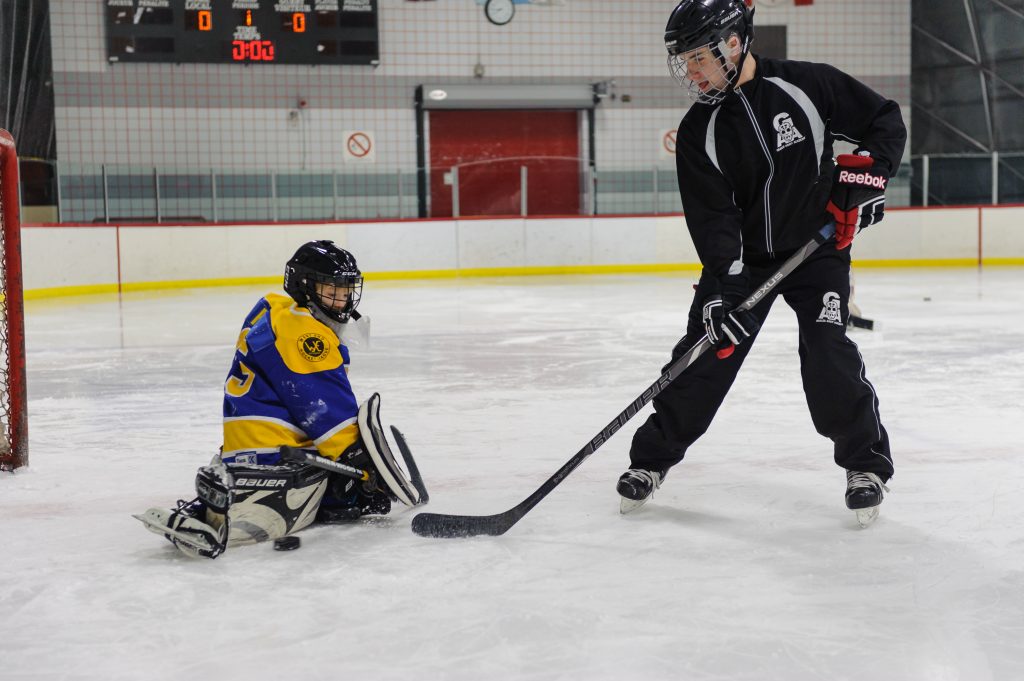 Although it may sound simple, there are a lot of factors that go into ensuring that one is in position on time, and therefore extensive attention to detail needs to be paid to all levels of goaltenders to ensure that they are taught proper technical foundations to build speed and agility on for a successful future in hockey.
Although it may sound simple, there are a lot of factors that go into ensuring that one is in position on time, and therefore extensive attention to detail needs to be paid to all levels of goaltenders to ensure that they are taught proper technical foundations to build speed and agility on for a successful future in hockey.
In The Line of Fire
Direct movements are an essential aspect of a goaltender’s game, and during our goalie training programs, the R3E System educates goalies to simplify their game by applying one of the simplest teachings that everyone has learned during their time in the classroom: The most direct, and quickest path from Point A to Point B is in a straight line. This method can be applied to both a goaltender’s skating game, and sliding game. GAA teaches our students that despite travelling along this path, that each push and each stop should be done with force in order to match the speed of the puck. During goalie training, pushing hard and stopping hard will not only allow the goaltender to strengthen their legs and improve their edge work, but it will also help them with their timing to be in position for passing scenarios.
Reacting with Efficiency
In a sport where anything can happen, we teach our students to keep the shoulders square to the puck at all times rather than turning the shoulders to the direction that they expect the puck to go. This allows the goaltender to be ready to react to shots with more ease in addition to maximizing coverage of the net at all times.
Stick Placement and Coverage
An additional benefit of keeping the shoulders square to the puck is that as a direct result, the stick will be easier to keep in its proper position of along the ice and in front of the 5-hole. This can be done by adding additional focus of ensuring that the blocker arm is held firmly against the body. In comparison, if a goaltender were to twist their upper body to direct themselves to the position which they believe the puck to be headed, they will lose the position of their stick to one side or the other.
Leave “The Twist” To Your Great-Grandparents
Goalie Army Academy recommends against any movement which may result in the body of the goaltender becoming out of position. Whether it is during standing movements, or recovering from a butterfly, twisting one’s core to direct the body to the position of where they believe the puck to end up is one of them. By twisting the body, a goaltender is adding an unnecessary step to their technique that will do more harm than good and allows the goaltender to fall behind before they even start. This is because they are allowing their body to fall out of a “square position” to the puck. Instead, they won’t be ready for a shot from a quick release as the only part of the body facing the puck in the middle of a movement, would be the goaltender’s side.
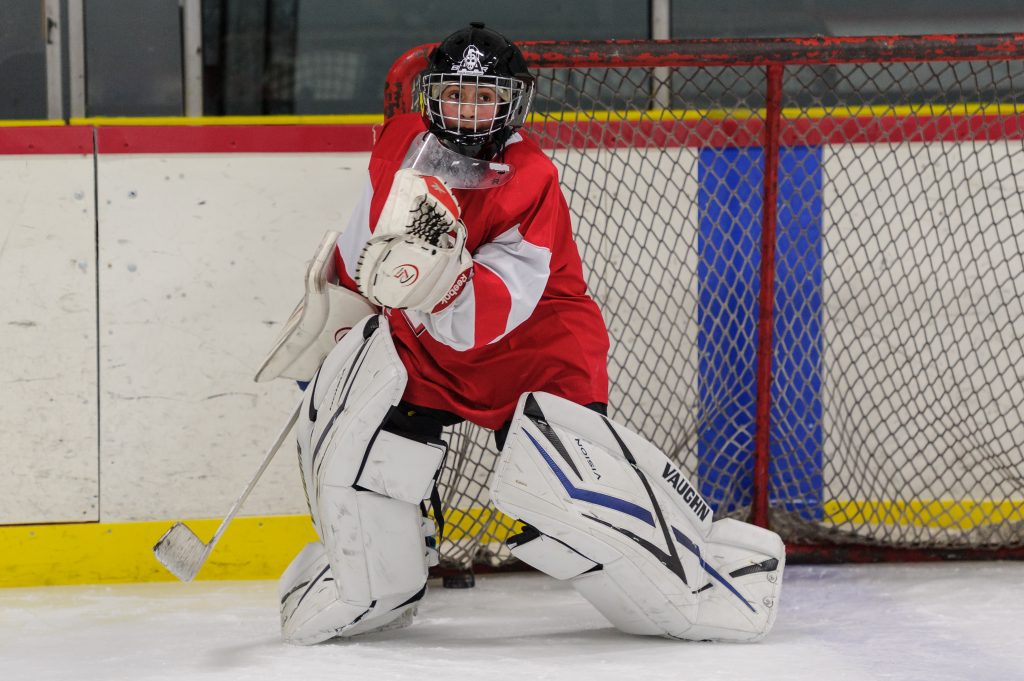 Poor positioning during movements due to twisting one’s side to the puck is just the beginning of the list of concerning poor habits that goalies may fall into. Adding to poor positioning is the improper execution, or timing of the movement. Twisting results in the goaltender turning both of their skates parallel to the direction that the puck is travelling. Then they will have to regain their positioning to be square to the puck at the end of the movement. In order to do so, we have seen two main methods that have been used to come to a stop.
Poor positioning during movements due to twisting one’s side to the puck is just the beginning of the list of concerning poor habits that goalies may fall into. Adding to poor positioning is the improper execution, or timing of the movement. Twisting results in the goaltender turning both of their skates parallel to the direction that the puck is travelling. Then they will have to regain their positioning to be square to the puck at the end of the movement. In order to do so, we have seen two main methods that have been used to come to a stop.
The first is something which we compare to “snowplowing” when skiing, and the other is a drag of the pushing leg’s skate. Although both methods allow the goaltender to eventually come to a stop, neither allows the goaltender to do so quickly, and both result in the goaltender not being able to react quickly to shots, re-directions, deflections, or a redistribution of their weight into other directions. When playing as a roller hockey goaltender, these methods may work. But on the ice, it just makes more sense to use your edges for what they were made for.
Check the Spring In Your Step At the Door
An extremely important factor of ensuring proper timing for any standing movement within the crease is maintaining a bend in the knees as much as possible. Too many goaltenders have a tendency to straighten their legs and then only bend when they are expecting a shot. Via our goalie clinics and goaltender-specific power skating programs, we educate our students to be in their ready stance at all times during standing movements to remain, well…ready.
Allowing the knees to straighten will result in the goaltender not being prepared to react properly to lower shots, in addition to falling behind during passing plays. Although goaltenders must straighten their pushing leg during standing movements, they need to ensure that their stopping leg remains bent. By doing so, the goaltender will remain prepared for stopping hard, reacting to lower shots quickly, and occasions where they may need to redirect their weight distribution to the opposite direction. A goaltender who has a tendency of straightening their legs can normally be seen during extensive in-crease skating exercises, or while shuffling during Goaltender-Specific Power Skating. It is evident that the goaltender is not prepared for a shot as a result from not maintaining a bend in their knees, as they will lack power, agility, and timing because of the fraction of a second more that it takes to bend and straighten with every push and stop.
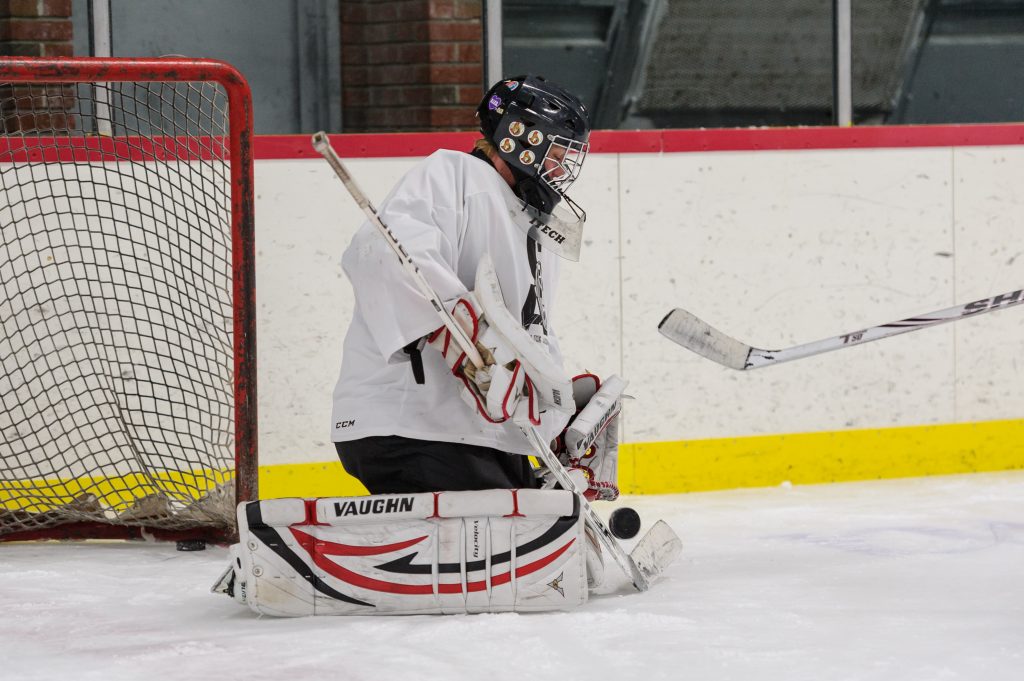 Direct Into Slides
Direct Into Slides
For our elite level students it comes naturally from years of practice. For our beginners however, it’s a focus of in-crease movement exercises and a staple within their training plan. It’s no secret that beginner goaltenders become so focused on reaching outward with their arms and legs that they forget that there’s a process that if mastered, will carry them a long way.
Via our various goalie training options, Goalie Army Academy teaches our students that keeping as much mass between the net and the puck is to their advantage. Therefore, to time a quick and effective butterfly slide, the goaltender must follow the following steps in order:
- C-cut with the lead leg to direct the body to a parallel path that the puck is moving, thus pivoting the body and shoulders
- Bend the lead knee downward to prepare for the slide
- Push with the back leg with the force required to direct the goaltender’s positioning from Point A to Point B, while dropping the lead knee to the ice, allowing the face of the pad to remain parallel to the path of the puck
- Fully extend the pushing leg to get as much force out of it as possible
- Close the gap between the knees by bringing the pushing leg’s knee toward the sliding knee
Simply Put
By following the above steps in order, our students ensure proper weight distribution of their slides by maximizing their efficiency through remaining square to the puck, and waste as little time as possible by allowing their body to pivot via the C-cut. By pivoting the body, the goaltender is able to keep their shoulders parallel to the path of the puck in order to block as much of the net as possible with their body in addition to being able to remain agile and react outward quickly.
Please feel free to contact us for additional ideas and training in this and other areas. We look forward to your feedback.

Leave a Reply